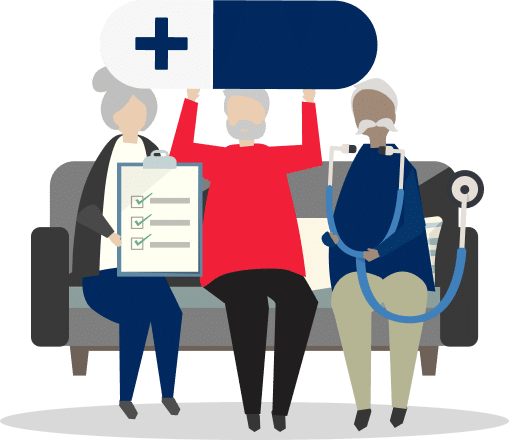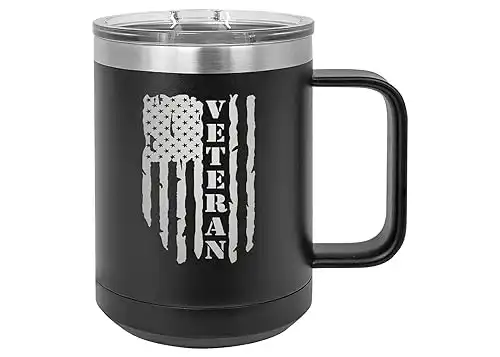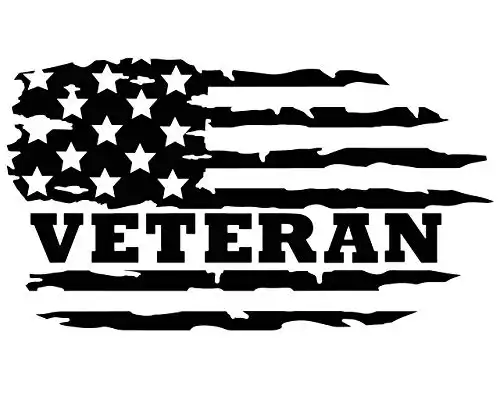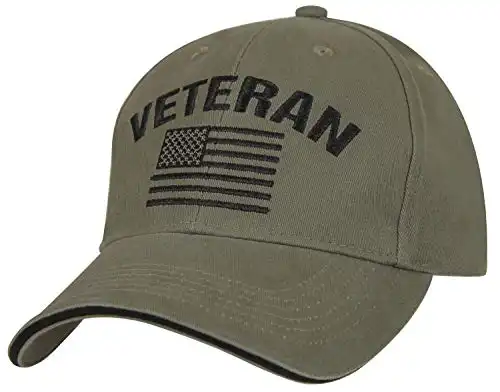Veterans Readiness and Employment
Veterans with service-connected disabilities often face uncertainty and obstacles in transitioning to employment in the civilian world. Fortunately, VA benefits aren’t limited to monthly payments or medical coverage. The Veterans Readiness and Employment program helps veterans with service-connected disabilities prepare for careers after military service. It offers government-funded job training, vocational counseling, job-search assistance, support for entrepreneurs, and other valuable benefits. If you are a veteran with a service-connected disability, Veterans Guide can help you learn more about the benefits available to you.
- The Veterans Readiness and Employment (VR&E) or Chapter 31 program offers job training, vocational counseling, and support for disabled veterans transitioning to civilian careers.
- Eligibility for VR&E services extends to veterans with service-connected disabilities, with specific criteria for active-duty members and discharge dates affecting the duration of benefits.
- VR&E includes various tracks aimed at re-employment, skill transfer, self-employment, long-term employment services, and independent living support, tailored to individual needs and capabilities.
Securing well-paying and fulfilling employment is almost always challenging. But it’s even more difficult and stressful for veterans with service-related disabilities and active duty members transitioning from service due to a disability. The Bureau of Labor Statistics reports that 27 percent of all veterans have a service-connected disability, and the unemployment rate among this group in 2022 was 3.6 percent compared to 2.7 percent for veterans with no disability.
The United States government recognizes that disabilities incurred while serving your country can make providing for yourself and your family difficult. Fortunately, the U.S. Department of Veterans Affairs offers the Veteran Readiness and Employment program, or VR&E, which helps disabled service members find and keep employment. Veterans Guide is here to help veterans receive the benefits they have earned.
What Is Veterans Readiness and Employment?
Veterans Readiness and Employment is a VA program that provides veterans with employment training, support, and resources after military service. Also called VR&E or Chapter 31, this program is specifically designed to help veterans and active-duty service members with service-related disabilities who need assistance overcoming employment-related challenges as they transition to civilian life. This vocational rehabilitation and employment program offers a variety of training and benefits that help these veterans find gainful employment and function independently.
Who Is Eligible for Veterans Readiness and Employment?
The VR&E program is exclusively available to veterans and active-duty service members with a service-connected disability that limits their ability to work or prevents them from working entirely.
For veterans discharged from active duty before January 1, 2013, VR&E benefit eligibility begins from the date of a service member’s first VA disability rating or their last day of service and lasts 12 years. If you were discharged from active duty after that date, there is no time limit on your VR&E benefit eligibility.
Veterans with a service-connected disability rating of 10 percent or more who did not receive a dishonorable discharge are eligible to apply for VR&E services. If you are an active-duty service member, you can automatically receive VR&E benefits before you receive a VA disability rating if you suffer a severe injury related to your military service. You can also apply under the following conditions:
- You have a 20 percent or higher VA disability rating and are transitioning from the service.
- You are under evaluation for your overall fitness for duty through participation in the Integrated Disability Evaluation System process.
- You are waiting for a medical discharge.
What Are the Benefits of Veterans Readiness and Employment?
Some of the VR&E benefits that active duty or former service members can receive to facilitate employment and independent living after a service-related disability include:
- Interests and skills evaluations
- Job training
- Educational counseling
- Assistance with tuition for post-secondary education at a college, technical, or trade school
- Career counseling services
- Resume development
- Apprenticeships and on-the-job training
- Business counseling services
- Job placement assistance and the use of special employer incentives and job accommodations
- Independent living services, including guidance on grants for adaptive housing and living
The goal of these services is to help the veteran, depending on their ability level, find a vocation they enjoy and learn new ways of living independently.
Also, veterans who have a service-connected disability qualify to be a ‘protected veteran‘, which means they are protected from workplace discrimination.
- What Is Veterans Readiness And Employment?
- Who Is Eligible For Veterans Readiness And Employment?
- What Are The Benefits Of Veterans Readiness And Employment?
- What Are The Five Tracks To Veterans Readiness And Employment?
- How Can You Apply For Veterans Readiness And Employment?
- What Is The Difference Between The GI Bill And VR&E?
- VA Disability Appeals
- VA Disability Conditions
- Top 20 VA Claims
- TDIU
- Back Pay Ratings Increase
- Taxability of VA Disability
- BDD VA Claim
- How Long Does a VA Claim Take
- VA Disability 5-Year Rule
- How Much Weight Does a C&P Exam Have?
- Nexus Letter
- What is a Protected Veteran?
- Will My Spouse Receive My Benefits if I Die?
- VA Death Benefits
- VA Mileage Reimbursement
- VA Home Loans
- Veteran Finance
What Are the Five Tracks to Veterans Readiness and Employment?
Veterans and service members found eligible for Veterans Readiness and Employment services can complete one of five tracks aimed at achieving gainful employment and independent living.
Re-employment Track
This program helps disabled veterans and service members return to their former jobs after separating from the service. If the job is considered suitable for the veteran, the VA will support and assist them by providing rehabilitation, employment counseling, and employer accommodations.
Rapid Access to Employment Track
This track helps disabled veterans with specific skill sets find ways to help them transfer those skills quickly into their preferred employment positions after leaving military service. While this track doesn’t offer education resources, it offers additional career counseling, resume help, interview preparation, and job search assistance to help the veteran transition into a familiar role.
Self-Employment Track
Some veterans leaving the military want to start their own businesses. This particular track provides some valuable resources to achieve that goal. Disabled veterans can receive small business training, licensure and certification, and financial assistance for some startup costs.
Employment Through Long-Term Services Track
This track offers various long-term services to veterans who may need extra training or assistance to succeed in their preferred field. The primary goal of this program is to help the participants develop and execute an employment plan that will bring them long-term stability and happiness. Some services will include a job skills assessment, vocational training, on-the-job training, and job placement assistance.
Independent Living Track
This track gives veterans access to the resources and care they need to complete daily living tasks when they are unable to work due to a disability. The services, which help the veteran with things like dressing, bathing, and socializing, are available for up to two years or until the veteran finds suitable employment.
How Can You Apply For Veterans Readiness and Employment?
If you have internet access, you can apply for VR&E benefits online. Another option is to apply in person or at a VA regional office. The VA can mail you a copy of the application or answer your questions.
If you are a disabled veteran and apply through the mail, you will need to complete VA Form 28-1900 and mail your application to:
Department of Veterans Affairs, VR&E Intake Center
PO Box 5210, Janesville, WI 52547
If you are an active service member who hasn’t yet received a disability rating, you can still apply by completing VA Form 28-0588 and submitting it to the above address.
Once you apply, a Vocational Rehabilitation Counselor will work with you to determine your eligibility for benefits.
What Is the Difference Between the GI Bill and VR&E?
Veterans should be aware of major differences between VR&E under Chapter 31 and Chapter 33, also known as the GI Bill. Chapter 31 aims to specifically assist veterans with at least a 10 percent disability rating and has specific eligibility criteria. On the other hand, the GI Bill doesn’t have such conditions—it is available to all veterans and active-duty service members.
One of the great things about the GI Bill and VR&E is that veterans who qualify can take advantage of both simultaneously for education and job training. For example, Chapter 31 can cover your tuition costs, and the GI Bill can pay for your monthly housing allowance and book stipend.
If you want to use your VA benefits for Chapter 31 or 33, you must find a school that accepts them. Some schools or universities will only accept one type, while others accept both. Thus, it’s important to choose the right school and compare benefits.
What Is the Difference Between GI Bill Payments and VR&E Payments?
Another difference is that the GI Bill only offers up to 36 months of benefits, while VR&E provides qualifying veterans up to 48 months. There was confusion in the past about whether using Chapter 31 reduces Chapter 33 benefits. The VA recently clarified that it does not.
In a 2021 rule change, the VA stated that eligible recipients could use VR&E subsistence payments and not have those payments deducted from their GI Bill benefits. The rule change also extends Post-9/11 GI Bill benefits to 48 months for veterans using VR&E benefits.
To learn more about the VR&E program and determine if you are eligible for benefits, contact Veterans Guide today.






